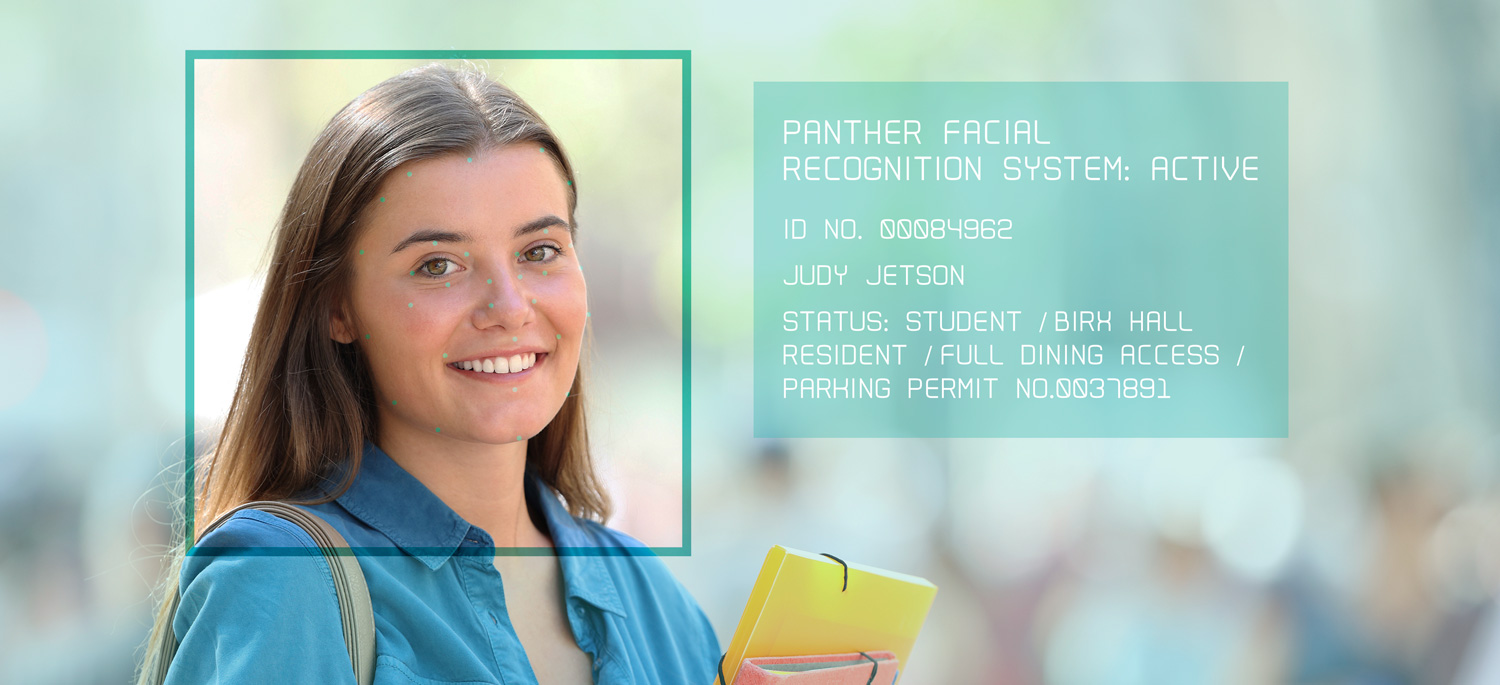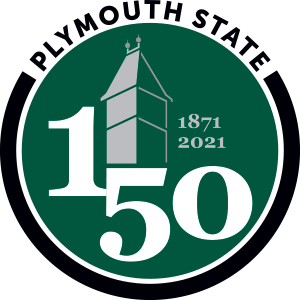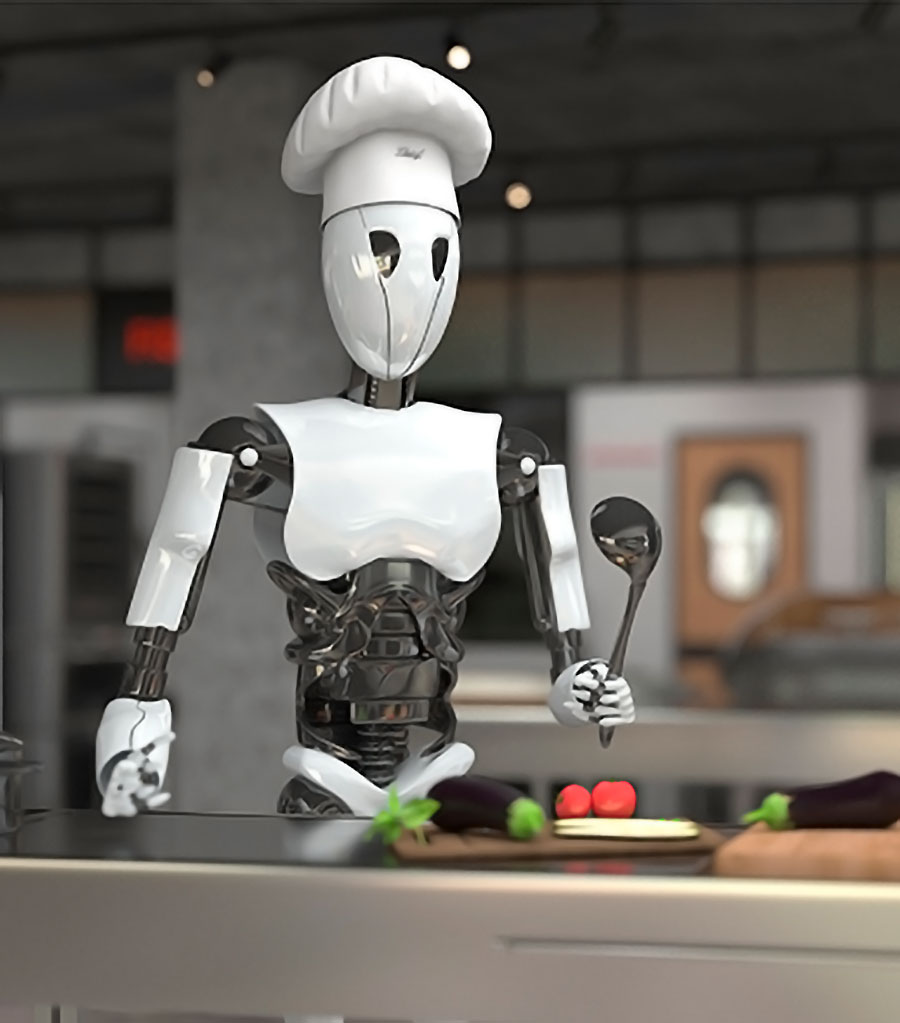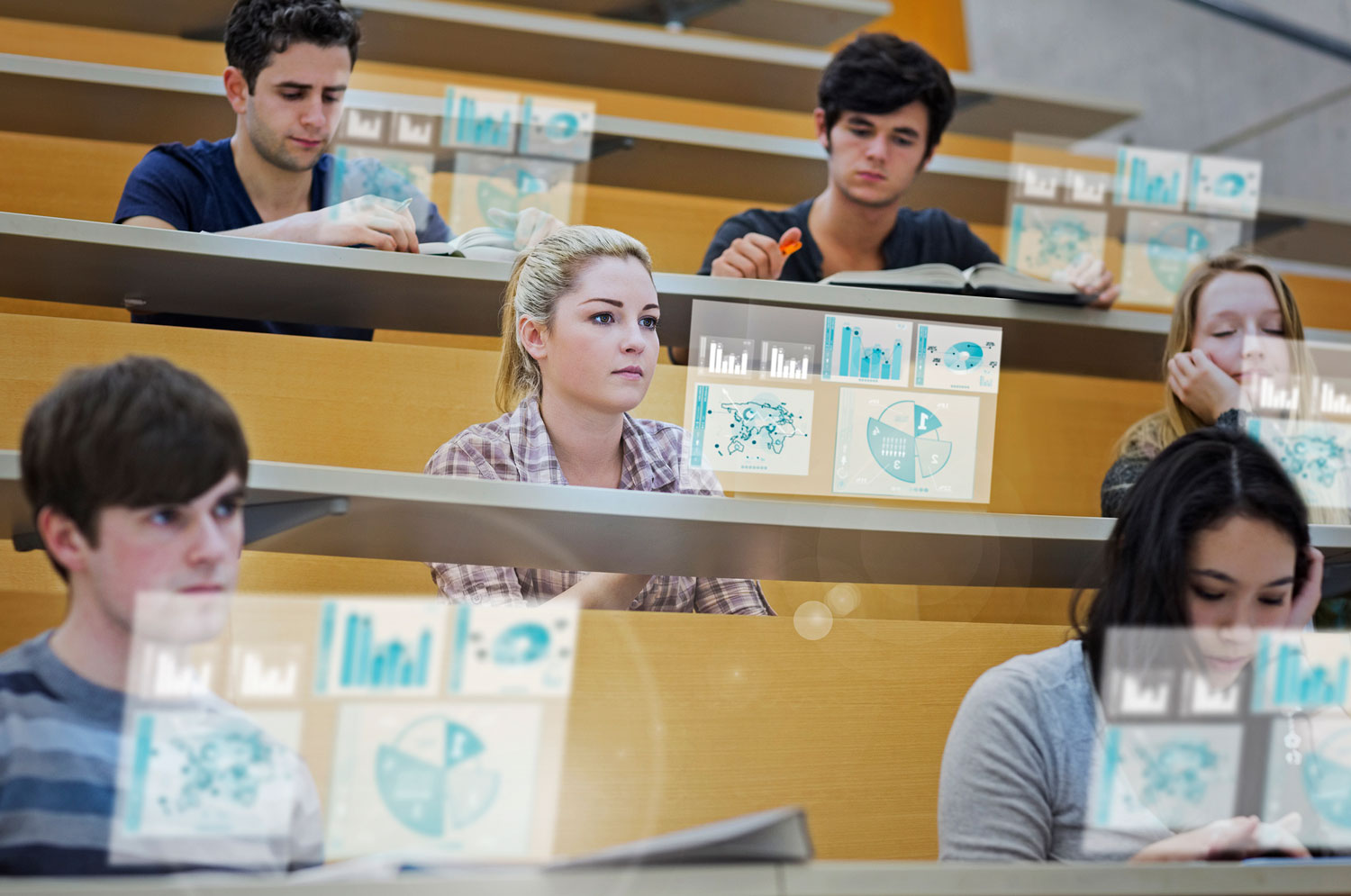
 Robots, Holograms, and Hoverboards: A Day in the Life of a 2071 Panther
Robots, Holograms, and Hoverboards: A Day in the Life of a 2071 PantherLeading up to the automatic sliding doors of Prospect Hall, an archway with facial recognition instantly grants me access. The place is almost empty—about 10 to 15 students in total. It was only 8:30, and most kids do not have a class as early as 9:00, the first morning block. I make my way over to the omelet station, where Robot Chef Moosilauke and Robot Chef Tecumseh cook up the popular breakfast option. I make my way over to the touchscreen kiosk where I select cheddar cheese, tomatoes, and green peppers. I watch as Tecumseh gathers the ingredients and cooks the omelet on the griddle. A few minutes later, the eggs are displayed on a ceramic plate by the pickup window. After grabbing a coffee from the beverage station, I maneuver past Stinson, the cleaning robot wiping down some empty tables, and find a seat by the television wall showing the local news.

I was looking forward to my two General Education courses, sustainability and coding. I was particularly excited for The Future of Energy today because an alum guest speaker, Ryan Smith ‘2061, would be appearing via hologram to speak to our class. Smith is the owner of a Manchester-based company that upgraded the solar panels on Lamson Library last year.
Face I.D. once again granted me access to Rounds, and I opted for the stairs over the high-speed elevator to get to the third floor. Twenty students filled the chairs behind the platform at the front of the room, which had a floating electronic projection that read: “reserved for Mr. Ryan Smith, SunPower, Inc.” Dr. Johnson, the Plymouth State professor, assures us that Mr. Smith will be arriving any minute, and to pull up a document on the desk surface to take notes. I turn on my desk and use the touchscreen on the surface to pull up Microsoft Word 2070. “As Smith is talking, write down questions on your desk, and they will appear on the Smart Board for discussion afterward,” says Johnson.
By 9:10, pixels begin to materialize into a virtual, 3-D representation of Mr. Smith. Albeit with a bluish tint, Mr. Smith’s whole body is represented, and he can point to his prepared PowerPoint on the Smart Board that Dr. Johnson has prepared. “Can everyone hear me alright?” he asks. The class assures him that the audio is loud and clear. Large speakers in all four corners of every room and, if desired, screens with highly accurate, real-time closed captions make virtual guest speakers sound as if they are in the room. Every movement in his office in Manchester is transferred to the hologram with very little lag time.
Dr. Johnson was here to explain, in detail, how solar panels work. In particular, how the panels on the Lamson Library are able to store solar energy for use on cloudy days. After Mr. Smith faded away, class was over.
Most students have learned the basics of coding in their high school classes, but Plymouth State, recognizing the growing need, requires students to continue with at least one class before graduation. I had to get to Boyd from Rounds and opted to walk to exercise my legs. Sometimes, I may use the conveyer belt system that runs on the side of each brick walkway, my hoverboard, or the electric scooter sharing system, but it is important to move around on foot, too. This was a point often stressed in my public health class. By the time I got to Boyd, I decided to take the clear glass high-speed elevator to reach the classroom. I quickly took in the views of the mountains beyond I-93 before reaching the top floor of Boyd in five seconds.
The big coding project this semester was creating a miniature Pemi the Panther robot to check virtual tickets at sporting events and theatre performances. Students and faculty could get in for free via face I.D., but parents and spectators from the community would place their mobile device that displays their virtual ticket for Robot Pemi to scan. It was this year’s project for all of the robotics, design, and coding courses. Each class contributed their share to eventually be used for the final product. My class was specifically working on the segment of code that would control the commands of Pemi and how he would respond to common questions about tickets. Other classes worked on his movement and overall appearance.

While eating lunch, I planned out my afternoon. I needed to get some homework done because I wanted to attend the women’s ice hockey game at 6:00. The best place to study is Lamson Library with its expansive network of private study rooms with desktop monitors. I pulled up the Lamson Library app on my phone to make sure that one of its study rooms was open. The blueprint on the app revealed many free cubicles in the back corner of the basement, so I decided to head there after lunch to focus on my big coding project. After scooting over to Lamson, I enter the cubicle and my presence is immediately recognized. I hear the ding, which means a signal has been sent to the app to let other students know the room is taken.
Three hours of focused studying later, I made good headway on my portion of the robot Pemi project. I had done enough work for the day and studying in Lamson for so long left me hungry. I returned my scooter to the rack and opted to walk to grab a takeout Panther Bowl from the grab-and-go window at Prospect Hall. With the nice weather continuing into the evening, I sat at the picnic tables by the Peace Garden to indulge in the classic campus treat.
Feeling full and with all my homework done for the day, I was ready for the game. I hurried over to the HUB bus stop where I saw two of my friends waiting for the shuttle. While I waited, I peered at the “Panther Post” TV screen in the stop shelter. It shows all of the sports games, events, and activities happening that week on campus. I didn’t have much time to look at it before the electric, self-driving bus pulled up to the stop. They arrive every five minutes.
My friends and I walked through the Face I.D. gates granting me access to the ice rink and immediately found the student section where loud cheers boomed from a sea of green and white Panther gear. After three raucous periods of back-and-forth shots, PSU had beaten its archrival in a close 4-3 competition. Hollers from elated student fans filled the arena as everyone filtered out. A fleet of shuttles, programmed to know there was a hockey game that night, were all lined up in the parking lot ready to transport the students back to the Plymouth side of campus.
The shuttles dropped off the students and headed off to their charging stations. I trekked up the stairs to Pemigewasset Hall, took a quick elevator ride, entered my room, and collapsed into bed. A full day had ended and by morning the campus would be bustling again. ■ Reed Silvers ’23